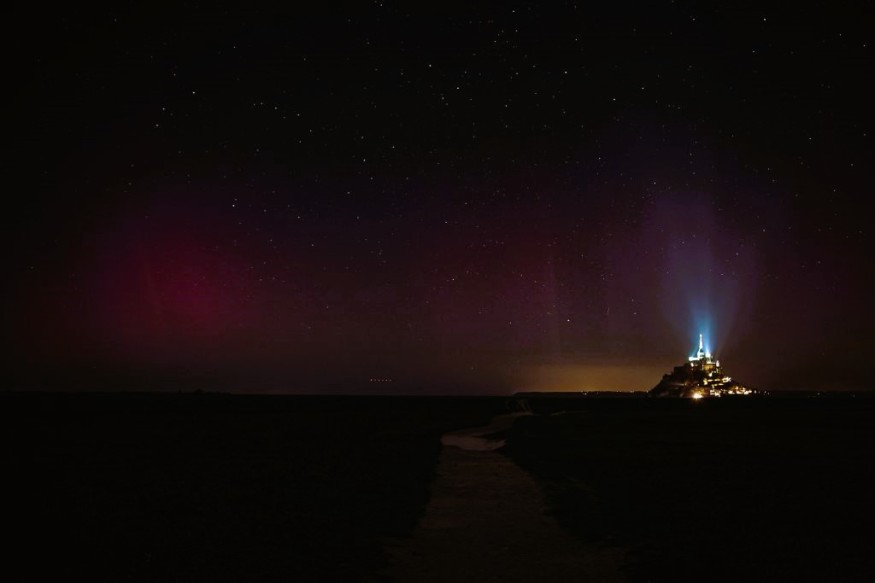
A rare blood-red aurora, known as the Northern Lights, was visible in South France after a strong solar storm reached the planet's magnetic field.
France's Northern Lights: Rare Blood-Red Aurora
A powerful solar plasma storm that hit Earth's magnetic field on September 24 "lit up" the night sky.
The "Holy Grail of Northern Lights," as at least one skywatcher called it, was visible throughout the northern hemisphere, spanning from Europe to North America, to anyone with clear skies.
Red auroras are already fairly unusual, so it is astonishing to observe them as far south as France and Kansas even without any special equipment.
Centuries ago, some residents of these lower latitudes believed the crimson skies were an ominous harbinger of impending conflict or catastrophe.
Even though scientists now know that both green and red auroras are natural occurrences that pose no serious threat to people, their awe-inspiring beauty is unaffected.
The lovely phenomenon is brought on by the Sun's emission of charged particles, which combine with oxygen molecules in the Earth's atmosphere and produce light.
The color of the produced light varies depending on the location where the atmosphere-charged solar particles interact with oxygen.
The most frequent aurora is a green curtain, which is brought on by light emitted by individual oxygen atoms suspended high in the atmosphere.
The more prevalent nitrogen atoms and ions can be forced to emit blues and pinks when high-speed electron showers are strong enough to push deeper into the atmosphere. These colors combine to generate a gentle purple at the curtain's edge.
On the other hand, dispersed oxygen atoms at very high altitudes of roughly 124 to 186 miles are the source of deep red light streaks. The thin gas is capable of holding onto the energy it absorbs for extended periods of time before emitting longer wavelengths, which is why it is typically only observed during very strong solar storms.
September 24's Geomagnetic Storm
Even though a solar storm was forecast to occur on September 24, the effects were more severe than anticipated.
Bright green and red lights danced across the sky across Iceland, Scotland, and the Netherlands almost immediately after the Sun's outburst set off a powerful geomagnetic storm above Europe.
Later, the light show made its way to North America via the Atlantic Ocean. Even though the effect was not quite as stunning as further north, people as far south as Nebraska and Kansas saw their sky glow an unsettling crimson.
The aurora's color glow is more misty the weaker it is, but the greater it is, the more light arcs over the night sky in bands.For those who chase the aurora, this year has been especially enjoyable. Just a few months have passed since the last red aurora lit up the skies of North America and Europe, and already this month of September, there have been several breathtaking northern light displays that have also traveled unusually far south.
Energetic Solar Cycle
Due to a remarkably active solar cycle, the Sun has recently erupted numerous times, one of which was powerful enough to cause radio blackouts in the US in June.
The apex of the solar cycle is currently approaching, which typically lasts 11 years.
Although it's nothing to be concerned about and is simply a characteristic of life on Earth, it sure can provide for some fantastic nights.
On September 26, specialists at EarthSky explained that although sun activity has returned to a low level, filament eruptions are still occurring over the solar disk, especially in the northeast and northwest. Experts examine the ejecta that was launched into space by these filaments to see if any of the blasts may affect the Earth.
Related Article : Eerie Bright Green Auroras Fill Skies Amid Alaska's Aurora Season
© 2025 NatureWorldNews.com All rights reserved. Do not reproduce without permission.





